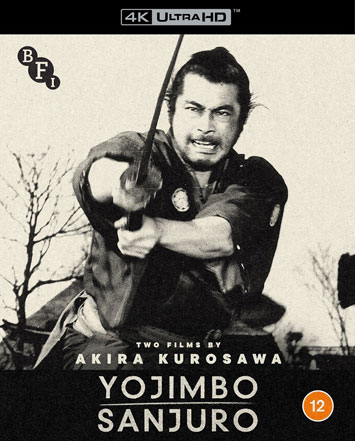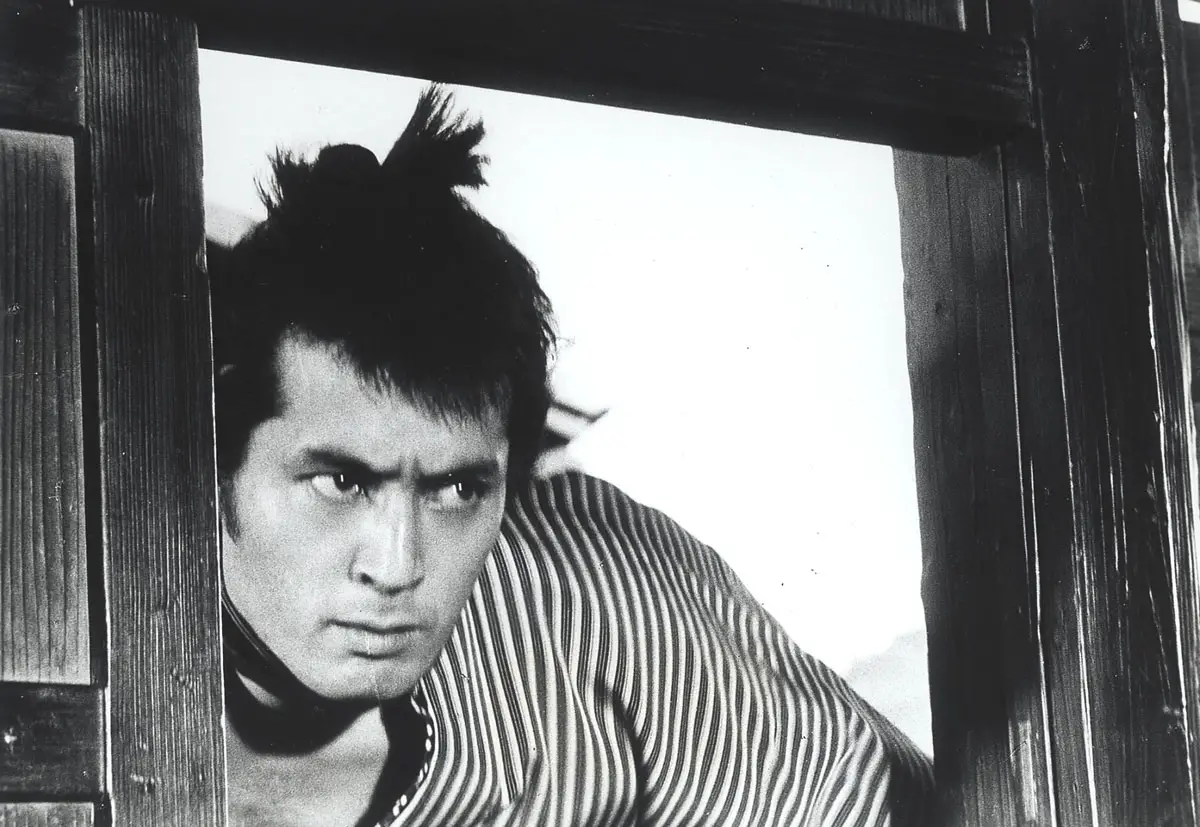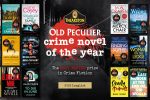Yojimbo & Sanjuro – Review

By Sarah Morgan
Where would Clint Eastwood be without Akira Kurosawa?
The pair never actually worked together, but Eastwood’s incredible screen career might never have happened had he not agreed to take the lead role in A Fistful of Dollars, Sergio Leone’s Spaghetti Western remake of Kurosawa’s Yojimbo.
 So if, like me, you’re a huge Eastwood fan, you really should watch it. And even if you’re not, it’s well worth a look because it’s influenced perhaps hundreds of film-makers since its big-screen release in 1961.
So if, like me, you’re a huge Eastwood fan, you really should watch it. And even if you’re not, it’s well worth a look because it’s influenced perhaps hundreds of film-makers since its big-screen release in 1961.
“Formidable character”
Kurosawa’s action film leading man of choice, Toshiro Mifune, takes the lead role as a wandering samurai. He’s a man seemingly with no name who, when asked what it is, makes one up on the spot, calling himself after what he sees immediately in front of him – a mulberry field.
He turns out to be a formidable character, a mighty warrior with brains to boot. He’s soon plotting to bring peace to a lawless town by pitting two warring factions against each other in a fight to the death.
It’s an excellent film, as you’d expect from somebody of Kurosawa’s reputation, better even than Leone’s much-lauded remake. Some viewers may disagree with that, but they’ll no doubt have great fun spotting the moments shared by both movies.
A year later, Kurosawa followed it with Sanjuro, which sees Mifune reprise his Yojimbo role (incidentally, Leone didn’t base For a Few Dollars More on this production, preferring to go with an entirely original story).
“Dominates the screen”
This time, Mifune’s alter ego isn’t alone. He’s taken nine naive and earnest samurai under his wing, using his cunning once again while leading them into a battle sparked by corrupt local government officials. It’s more light-hearted than its predecessor, but it’s just as fascinating and has an ending that some commentators claim inspired western film-makers to adopt a more brutal, gory approach to violence.
Kurosawa regulars Takashi Shimura and Tatsuya Nakadai also appear alongside Mifune in both films, although it’s the latter who really dominates the screen.
The special features include video essays and interviews with Japanese cinema experts, audio commentaries, making-of documentaries and an introduction from director Alex Cox.
It’s an excellent set, with both films looking fabulous thanks to 4K restorations. It’s certainly a must for any self-respecting cinephile.
- UHD: Restored 4K (2160p) UHD Blu-ray presentation in Dolby Vision (HDR10 compatible)
- Blu-ray: Newly restored in 4K and presented in High Definition
- Sword For Hire (2024, 25 mins): Kurosawa scholar Jasper Sharp discusses Yojimbo and Sanjuro in this analytical assessment
- Audio commentary on Yojimbo by film critic Philip Kemp (2000)
- Akira Kurosawa: It is Wonderful to Create – Yojimbo (2002, 45 mins): a detailed documentary study of the film
- Introduction to Sanjuro (2003, 5 mins): filmmaker Alex Cox introduces Sanjuro
- Newly recorded audio commentary on Sanjuro by Japanese-Australian filmmaker Kenta McGrath
- Akira Kurosawa: It is Wonderful to Create – Sanjuro (2002, 35 mins): the film is examined in detail in this documentary study
- Out of the Dust Storm and Into the Koi Pond (2025, 18 mins): Nic Wassell considers the role of nature as a background to human machinations in both films
- Alex Cox on Kurosawa (2003, 9 mins): the director discusses the life and work of Akira Kurosawa
- Original trailers
- Image galleries
- First pressing only - Illustrated booklet with new writing on both films by Hayley Scanlon, writing on both films by Akira Kurosawa, originally published in1964, original reviews and film credits










